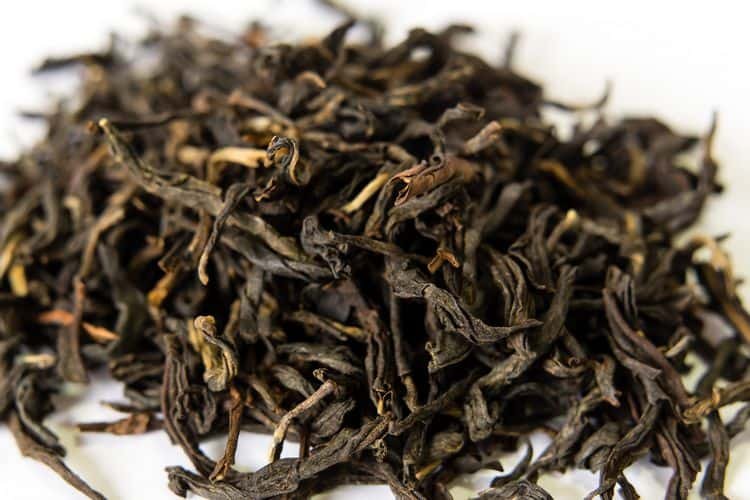
Keemun Tea (Qimen Hongcha in Mandarin) is the most famous black tea from China. It is grown in a mountainous area covered with forests and characterized by low temperatures, high humidity and frequent fog.
The lack of sunlight increases the chlorophyll content in the leaves, leading to a fruity, sweet and mellow taste and a distinct floral fragrance. When brewed, the tea takes on a clear, brilliant red color.
Table of Contents
Where to Buy Qimen Tea
This tea can be found in any specialty tea shop or through an online vendor. If you are unsure where to begin, you can check out some of my recommendations below.
How to Prepare Keemun Tea
The preparation instructions given here are for loose leaf teas. For tea bags, you can just follow the instructions given on the box.
The best brewing temperature is 90-95ºC (194-205ºF), which is just below the boiling point. You can just boil the water using a simple stove-top kettle and then let it cool for 20 seconds.
If you plan on trying a lot of varieties of tea and/or coffee it might be worth it to invest in a dispenser that can boil water and keep it warm or an electric kettle with a variable temperature setting.
Personally, I recommend this Cuisinart kettle, because it has presets for every type of tea, so you always get the perfect temperature:
Keemun black tea can be brewed in a variety of vessels. For these instructions, I will use a traditional Chinese clay teapot known as an yixing.
Brewing Instructions
- Fill both the teapot and the cup about halfway with hot water to pre-heat them. Tilt them a bit so that the water creeps up the side and then rotate them so the insides get wet all the way around. Then pour the water out.
- Put 1-2 teaspoons of tea leaves into the teapot. If using a different vessel, use 1-2 teaspoons for every 8 oz. (236 ml) of water.
- Fill the teapot with 90-95ºC (194-205ºF) water.
- Place the lid on the teapot and let the tea steep for 3 minutes.
- Pour the tea into the teacups and enjoy your tea!
- You can get 3-5 infusions out of most varieties. Increase the steeping time 30 seconds for each infusion. How many infusions you do depends entirely on your taste. Experiment.
Use the amounts given in these instructions as a rough guide. If you find the resulting tea too weak, add more tea leaves; if it is too strong, reduce the amount of leaves used. Similarly, try increasing or decreasing the steeping times.
The video below shows an alternative brewing method, called the gongfu style, which uses more tea leaves and a much shorter steeping time. Using this method, you can get 6-8 infusions out of your leaves.
I used a tea press (like these) in the video, but the gongfu method is traditionally employed with an yixing or a gaiwan.
Best Keemun Teas
Most Convenient
Many people already have an account with Amazon.com so it is probably the easiest place to buy tea online. They don’t have a huge selection of quality Keemun, but they have one good choice: the Keemun Mao Feng from Tealyra.
Best Value
My personal recommendation is the Keemun Hao Ya from Teavivre. Hao Ya is the highest grade and this one is both excellent and still affordable.
Sample available for $2.50
Teavivre also has a standard Keemun, which is one grade lower than a Hao Ya and thus also slightly less expensive.
Sample available for $2.00
Highest Quality
For an even higher quality tea, check out Teavivre’s Keemun Mao Feng. This special qimen variety is considered one of the world’s four best black teas.
Sample available for $3.50
More Information About Qimen Hongcha
Keemun tea takes its name from the Qimen region in Anhui province where it is produced. “Keemun” was the colonial spelling used for the area, which is nowadays spelled “Qimen”.
This black tea is fairly new, having been produced since 1875. An unsuccessful civil servant from the Qimen region by the name of Yu Ganchen decided to go to Fujian Province, which is one of China’s most famous tea growing regions, to learn all about black tea production.
He used what he learned to begin producing black tea back in his home region, which before then had only produced green teas. His new tea was a huge hit in China and soon gained fame in England as well. Even today, it is a key ingredient in many English breakfast tea blends.
A well-prepared cup of Qimen black tea has a bright red color, and have a light aroma with faint hints of smoke and floral. It tastes mellow and smooth, though the exact flavor depends on the type of Keemun.
Different Types Of Keemun Tea
Different harvest times and variations in processing lead to different varieties of Keemun. They are:
- Keemun Mao Feng – made from small leaves and the buds, picked very early in the year; the lightest and sweetest variety and also the most prized and expensive
- Keemun Hao Ya – also made from small leaves and buds, but harvested later; stronger more intense flavor; separated into two grades, with A being higher quality and B being lower; less expensive than Mao Feng, but still a very high-quality and highly prized tea
- Keemun Gongfu – also known as Congou tea is made of whole leaves rolled up tightly; made especially for the Chinese Gonfu tea ceremony
- Keemun Xin Ya – made from buds picked early in the year; least bitter of all the varieties.
- Hubei Keemun – despite the name, this tea actually comes from Hubei province and is thus not a real Qimen
Production Process
Producing Qimen takes a fairly involved process, which is perhaps one of the reasons it is such a highly prized tea.
The leaves are harvested only in the spring and summer and only the buds with the top two or three leaves are used. Even after being picked, the leaves are hand sorted and only the most premium ones are selected for further processing.
Those leaves then go through a very slow withering process, which dries the leaves and is partly responsible for the complex flavor of the final product.
After they have reached the perfect level of dryness, the leaves are rolled into the characteristic shape of Keemun leaves. The rolling process further brings out the distinct flavor.
Next, the leaves are oxidized. Oxidation is also done very slowly to really let the flavor develop. As a black tea, the leaves are allowed to oxidize completely.
Finally, the fully oxidized leaves are fired to remove any remaining moisture, before they are packaged and shipped off for sale.
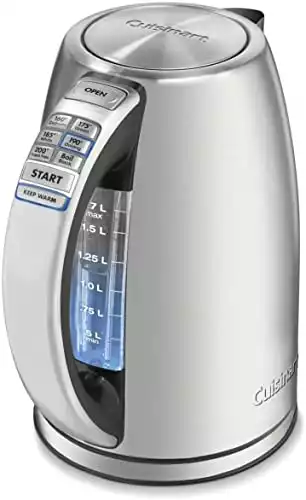
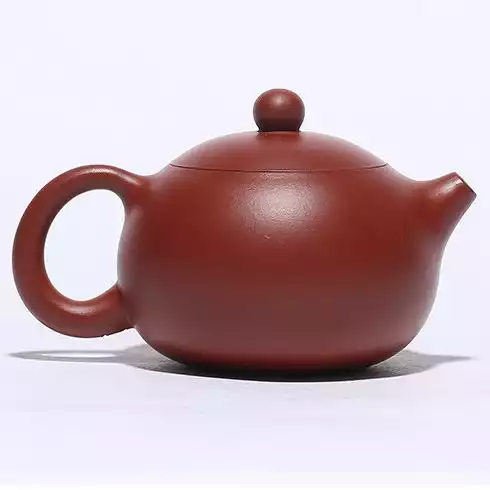
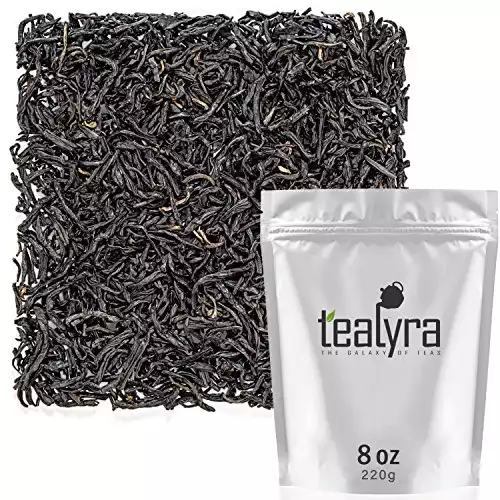

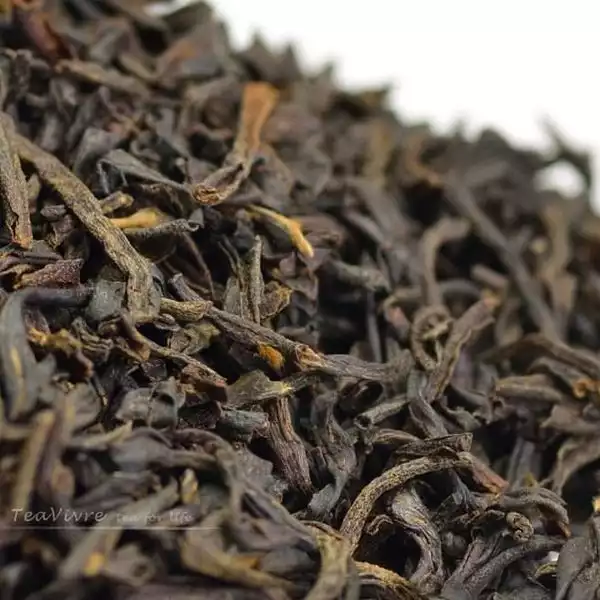
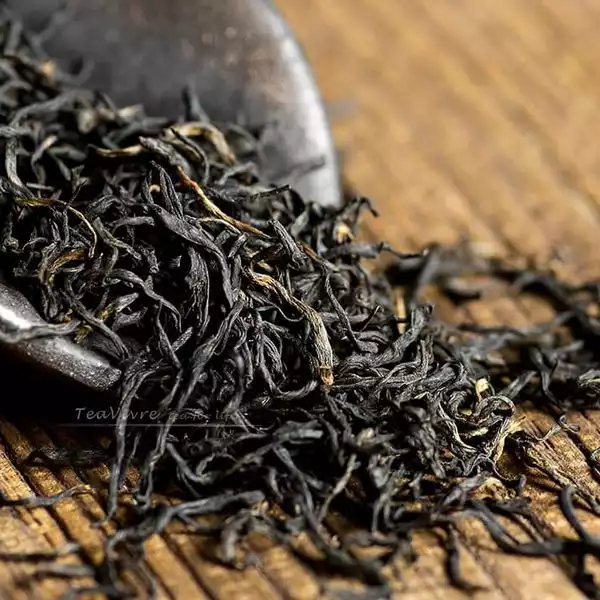
Need to know price per kg of keemun cha of various brands
Question:
Is there a good quality black tea with low caffeine. The high content of caffeine does not agree with my heart.
Thank you,
You can try lapsang souchong (I have a page about it on this site). It has a bit less caffeine, but the difference is not huge. If the caffeine content of one black tea causes you problems, they probably all will. If lapsang souchong still has too much, then a decaffeinated tea may be your best bet.